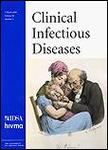版权所有:内蒙古大学图书馆 技术提供:维普资讯• 智图
内蒙古自治区呼和浩特市赛罕区大学西街235号 邮编: 010021

作者机构:Ctr Res Filariasis & Other Trop Dis CRFilMT Yaounde Cameroon Univ Montpellier Inst Rech Dev IRD UMI233 INSERM U1175 Montpellier France Membre Reseau Int Inst Pasteur Ctr Pasteur Cameroun Serv Epidemiol Yaounde Cameroon Imperial Coll London MRC Ctr Global Infect Dis Anal Sch Publ Hlth Norfolk Pl London W2 1PG England Imperial Coll London Sch Publ Hlth Dept Infect Dis Epidemiol London Ctr Neglected Trop Dis Res Norfolk Pl London W2 1PG England Univ Yaounde I Fac Med & Biomed Sci Yaounde Cameroon
出 版 物:《CLINICAL INFECTIOUS DISEASES》 (临床传染病)
年 卷 期:2021年第72卷第Sup3期
页 面:S158-S164页
核心收录:
学科分类:0710[理学-生物学] 1004[医学-公共卫生与预防医学(可授医学、理学学位)] 1002[医学-临床医学] 1001[医学-基础医学(可授医学、理学学位)] 100201[医学-内科学(含:心血管病、血液病、呼吸系病、消化系病、内分泌与代谢病、肾病、风湿病、传染病)] 10[医学]
基 金:Bill & Melinda Gates Foundation through the TaskForce for Global Health project "Filling the Gaps: Operational Research to Ensure the Success of the Neglected Tropical Disease Control and Elimination Programs" [OPP1033740, NTD-SC/NCT 049] African Programme for Onchocerciasis Control (APOC) US Agency for International Development (USAID) ENVISION Project USAID [AID-OAA-A-11-00048] Royal Society International Exchange Programme [IES\R2\181017] NTD Modelling Consortium by the Bill & Melinda Gates Foundation [OPP1184344] UK Medical Research Council (MRC) under the MRC/DFID, European and Developing Countries Clinical Trials Partnership (EDCTP2) program - European Union [MR/R015600/1] UK Department for International Development (DFID) under the MRC/DFID, European and Developing Countries Clinical Trials Partnership (EDCTP2) program - European Union [MR/R015600/1] Institut Bertrand Buisson, France [2011_TNT_01] Bill and Melinda Gates Foundation [OPP1033740] Funding Source: Bill and Melinda Gates Foundation
主 题:Onchocerca volvulus Loa loa diagnosis classification and regression tree model skin snip technique
摘 要:Background. The diagnostic gold standard for onchocerciasis relies on identification and enumeration of (skin-dwelling) Onchocerca volvulus microfilariae (mf) using the skin snip technique (SST). In a recent study, blood-borne Loa loa mf were found by SST in individuals heavily infected with L. loa, and microscopically misidentified as O. volvulus due to their superficially similar morphology. This study investigates the relationship between L. loa microfilarial density (Loa MFD) and the probability of testing SST positive. Methods. A total of 1053 participants from the (onchocerciasis and loiasis coendemic) East Region in Cameroon were tested for (1) Loa MFD in blood samples, (2) O. volvulus presence by SST, and (3) Immunoglobulin (Ig) G4 antibody positivity to Ov16 by rapid diagnostic test (RDT). A Classification and Regression Tree (CART) model was used to perform a supervised classification of SST status and identify a Loa MFD threshold above which it is highly likely to find L. loa mf in skin snips. Results. Of 1011 Ov16-negative individuals, 28 (2.8%) tested SST positive and 150 (14.8%) were L. loa positive. The range of Loa MFD was 0-85 200 mf/mL. The CART model subdivided the sample into 2 Loa MFD classes with a discrimination threshold of 4080 (95% CI, 2180-12 240) mf/mL. The probability of being SST positive exceeded 27% when Loa MFD was 4080 mf/mL. Conclusions. The probability of finding L. loa mf by SST increases significantly with Loa MFD. Skin-snip polymerase chain reaction would be useful when monitoring onchocerciasis prevalence by SST in onchocerciasis-loiasis coendemic areas.